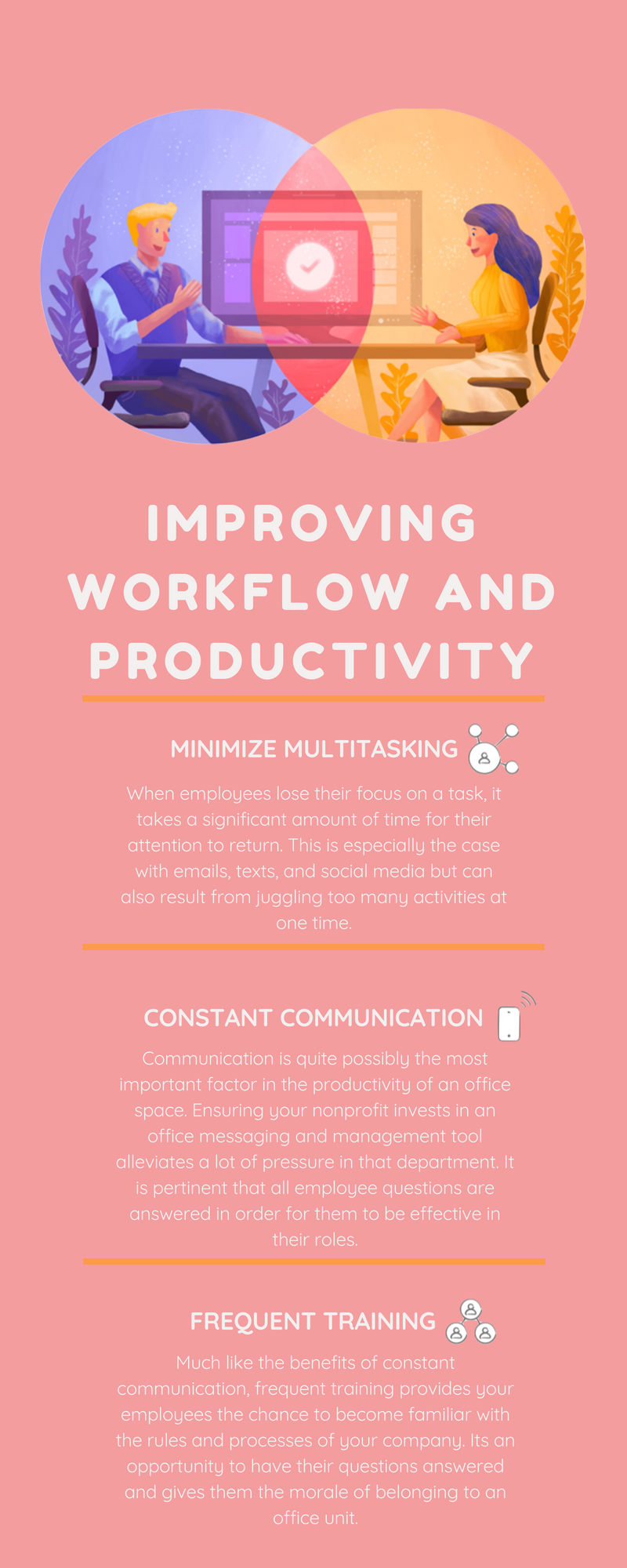A workflow diagram is a blueprint that communicates how tasks move between teams and resources. Creating one requires a bit of time and effort to capture everything. Most nonprofits have small teams with a lot on their plates, so this may seem like an inefficient use of time. But the time invested up front can help you improve productivity in the end

The Benefits You Gain
By making time to capture your organizational process in a workflow diagram you can:
- Easily communicate your process. Your diagram will explain your procedure in a clear and concise way. This makes it easier to discuss with an employee, new hire or external stakeholder.
- Teach new employees and volunteers their roles faster. New employees and volunteers can better understand their roles within the organization. This can be especially vital when replacing a long-term employee.
- Improve IT usage. When using technology tools, it’s common to use them for different tasks with no integration across an organization. A workflow diagram can help you look at the efficiency and profitability of your current operations and make improvements to streamline or automate resource-intensive tasks.
- Be safe rather than sorry. You can flag areas where setbacks might occur and anticipate what could trigger them. Then you can devise contingency plans and be better prepared.

What’s involved in preparing a workflow diagram
- Identify a particular process you would like to analyze. This may seem like a no-brainer but it’s very easy to get lost in all the associated processes – so be specific!
- Determine the start and end of this process. Focus in on the triggers that initiate and end the process. What do you do first? What does finishing look like?
- List out all the departments or teams involved and talk to them. Talk to each person in charge of their related task. Ask them to define the steps they undertake. By talking to the source, you get a better sense of what to include to make sure no step is forgotten.
- Who is involved?
- What actions are taking place?
- Where does each step occur? (ex. department)
- When does each step occur and how do they connect?
- Why are they (ex. individual, department or software) involved?
- Write a description of the process. After discussing what occurs with your colleagues, write it out step-by-step. Keep each step clear and concise. Flag steps based on a decision. These are usually questions with yes/no outcomes. Write out what steps follow each possible decision.
- Review the description with colleagues involved in the process. Share it with your colleagues for feedback. Once you have everyone’s seal of approval, you can head to the drawing board!
There are many types of workflow diagrams you can use to capture your process, such as basic flowcharts and overview diagrams. For many organizations, a lot of processes involve different departments or teams. In this case, one type of helpful diagram to connect it all is a Swim Lane Diagram.
Brief and transparent, workflow diagrams are a great tool to improve process management. The Swim Lane diagram is one approach that offers an effective overview of the ins and outs of a process. There is some work and effort required but by doing so, you can strengthen a nonprofit’s operations to better support the communities it serves.


